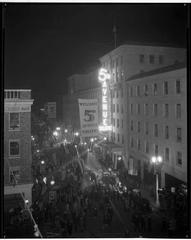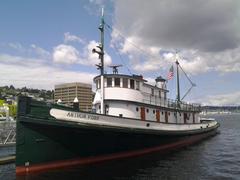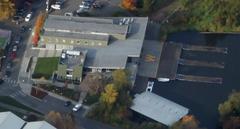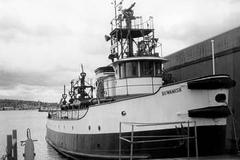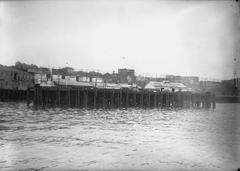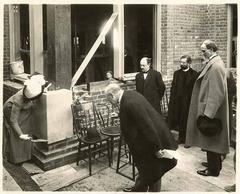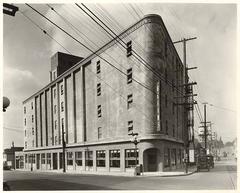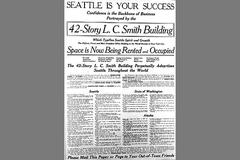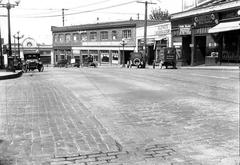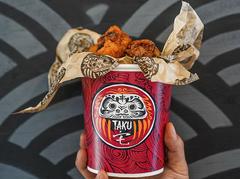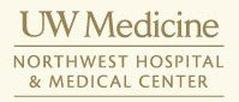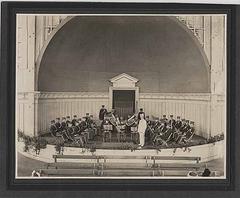
The People’s Wall Seattle: Visiting Hours, Tickets, History, and Cultural Guide
Date: 04/07/2025
Introduction
The People’s Wall in Seattle stands as a lasting symbol of civil rights activism, community resilience, and the city’s Black heritage. Located at 173 20th Avenue in the Squire Park neighborhood, this vibrant mural honors the Seattle Chapter of the Black Panther Party (SCBPP)—the first chapter outside California, founded by Aaron Dixon in 1968 (HistoryLink). Created by artist Dion Henderson in 1970, the mural memorializes nine fallen Panthers and celebrates the chapter’s legacy of empowerment, self-defense, and social service.
Beyond its artistic presence, The People’s Wall was both a backdrop and a participant in the SCBPP’s transformative community programs, including free breakfasts, food banks, and the establishment of the Carolyn Downs Family Medical Center (Historic Seattle). Surviving the demolition of its original headquarters, the mural remains a rare and powerful physical testament to Seattle’s Black Panther history, preserved through community restoration efforts (RevisitWA).
Today, The People’s Wall is freely accessible year-round and serves as a destination for those interested in Seattle historical sites, civil rights history, and public art. The mural’s bold Pan-African colors and evocative portraits invite reflection and inspiration, while its location in the Central District provides opportunities to explore nearby landmarks and deepen understanding of the city’s activist heritage (Wikipedia). This guide provides detailed insights into the mural’s origins, artistic features, visitor information, and preservation—helping you fully engage with this landmark of activism and community empowerment.
Table of Contents
- Origins of The People’s Wall
- Artistic Vision and Symbolism
- Community Impact and Ongoing Legacy
- Preservation and Restoration
- Visiting The People’s Wall: Hours, Access, and Tips
- Guided Tours and Nearby Attractions
- Practical Visitor Information
- Frequently Asked Questions (FAQ)
- Summary and Recommendations
- References
Origins of The People’s Wall
The People’s Wall is rooted in the activism of the Black Panther Party’s Seattle Chapter. Founded in 1968 by Aaron Dixon, the SCBPP responded to national calls for racial justice and quickly became a focal point for organizing in the Central District (HistoryLink).
By 1969, the chapter had moved to a new headquarters at 173 20th Avenue, chosen for its defensibility amid frequent raids (HistoryLink Tours). The Party commissioned Dion Henderson, a local African American artist, to create a mural on the retaining wall—dedicating it to nine fallen Panthers and embedding it with imagery reflective of their mission (RevisitWA).
Artistic Vision and Symbolism
Completed in 1970, the mural is more than decorative; it is a deliberate memorial and a rallying cry. Henderson’s work features bold Pan-African colors—red, black, and green—representing the blood, skin, and land of African peoples. The mural includes the names of nine fallen Panthers, inscribed as a perpetual tribute: Sydney Miller, Welton Butch Armstead, Albert Postel, Larry War, Lewis Jackson, Maud Allen, Carolyn Downs, Jim Graves, and Henry Boyer (Wikipedia).
Portraits, revolutionary iconography, and textual elements drawn from the BPP’s literature remind visitors of the struggle for justice and the ongoing need for community empowerment. The mural’s visual language continues to inspire reflection on Seattle’s past and present social movements.
Community Impact and Ongoing Legacy
The People’s Wall was central to the SCBPP’s community programs—free breakfasts, food banks, legal aid, education initiatives, and the founding of the Carolyn Downs Family Medical Center (Historic Seattle). These “survival programs” addressed immediate needs and modeled new forms of grassroots activism, impacting thousands of Seattle residents.
The wall endures as a living memorial and a source of inspiration for new generations. It remains a gathering place for commemorations, protests, and educational events, fostering solidarity and ongoing social justice work.
Preservation and Restoration
After the original headquarters was demolished in 1972, the mural survived as a rare remnant of the SCBPP’s physical legacy (RevisitWA). Recognizing its significance, the community led restoration efforts, including a major revival by artist Eddie Walker in 2008, which restored color and detail to the mural (Historic Seattle). Preservation is an ongoing process, supported by local artists, cultural organizations, and public grants.
Visiting The People’s Wall: Hours, Access, and Tips
Location: 173 20th Avenue, Seattle, WA (Central District, near the intersection with Union Street and East Spruce Street).
Visiting Hours: The mural is outdoors and accessible 24/7. Daytime visits are recommended for safety and optimal viewing.
Admission: Free. No tickets required.
Accessibility: Street-level, wheelchair-accessible sidewalk. Some pavement may be uneven; standard urban conditions apply.
Directions: Easily reachable by King County Metro bus routes serving the Central District. Limited street parking is available; observe local restrictions.
Safety: The area is generally safe during daylight; take standard urban precautions, especially at night. For tips, see Seattle Police Department’s visitor safety tips.
Guided Tours and Nearby Attractions
- Guided Tours: Local organizations and the Northwest African American Museum (NAAM) occasionally offer walking tours featuring The People’s Wall. Check NAAM’s website or community calendars for current offerings.
- Nearby Attractions:
- Northwest African American Museum (NAAM): Exhibits on Black history in the region.
- Byrd Barr Place (Front Porch Seattle): Community empowerment site.
- Pratt Park: Urban green space for relaxation.
- Local Black-owned cafes and restaurants.
Sample Itinerary:
- Morning: NAAM
- Midday: The People’s Wall
- Afternoon: Byrd Barr Place or a self-guided neighborhood mural tour
Practical Visitor Information
- Public Transit: Use King County Metro Trip Planner for bus schedules.
- Biking: Bike-share programs and bike lanes are available.
- Amenities: Restrooms, cafes, and stores found near East Union Street and 23rd Avenue.
Best Times to Visit: June–September for best weather; July features many local festivals (Events12 Seattle).
Photography: Permitted and encouraged; please respect residents’ privacy.
Respect for Site: The mural is a living memorial. Refrain from touching or defacing the artwork and be mindful of the residential neighborhood.
Frequently Asked Questions (FAQ)
Q: Are there visiting hours for The People’s Wall?
A: No, it is an outdoor mural accessible any time; daytime is recommended.
Q: Is there an admission fee or ticket required?
A: No, visiting is free.
Q: Is The People’s Wall wheelchair accessible?
A: Yes, though the sidewalk may have some uneven spots.
Q: Are guided tours available?
A: Yes, periodically through local organizations; check NAAM or community listings.
Q: Can I take photographs?
A: Yes, photography is permitted—please be considerate of residents.
Summary and Recommendations
The People’s Wall remains a vital monument to civil rights activism, community solidarity, and Seattle’s Black history. Its survival and ongoing preservation reflect collective efforts to honor and sustain the legacy of the Black Panther Party (HistoryLink; RevisitWA; King5; Historic Seattle). For a meaningful visit, pair The People’s Wall with nearby cultural attractions, consider joining a guided tour, and support local businesses.
To further enrich your experience, download the Audiala app for curated audio tours and stay connected with the latest preservation efforts and events.
References
- The People’s Wall: A Seattle Historical Site Honoring Civil Rights and Community Activism (HistoryLink)
- The People’s Wall: A Seattle Historical Site Honoring Civil Rights and Community Activism (Historic Seattle)
- The People’s Wall: A Seattle Historical Site Honoring Civil Rights and Community Activism (RevisitWA)
- The People’s Wall (Wikipedia)
- The People’s Wall Seattle: Visiting Hours, History, and Cultural Significance (King5)
- Preserving the Legacy and Cultural Significance of Central Area Staple Byrd Barr Place (Front Porch Seattle)
- Northwest African American Museum (NAAM)
- Seattle Police Department Visitor Safety Tips (Seattle Police Department)
- Seattle Events Calendar (Events12 Seattle)
- King County Metro Trip Planner (King County Metro)





